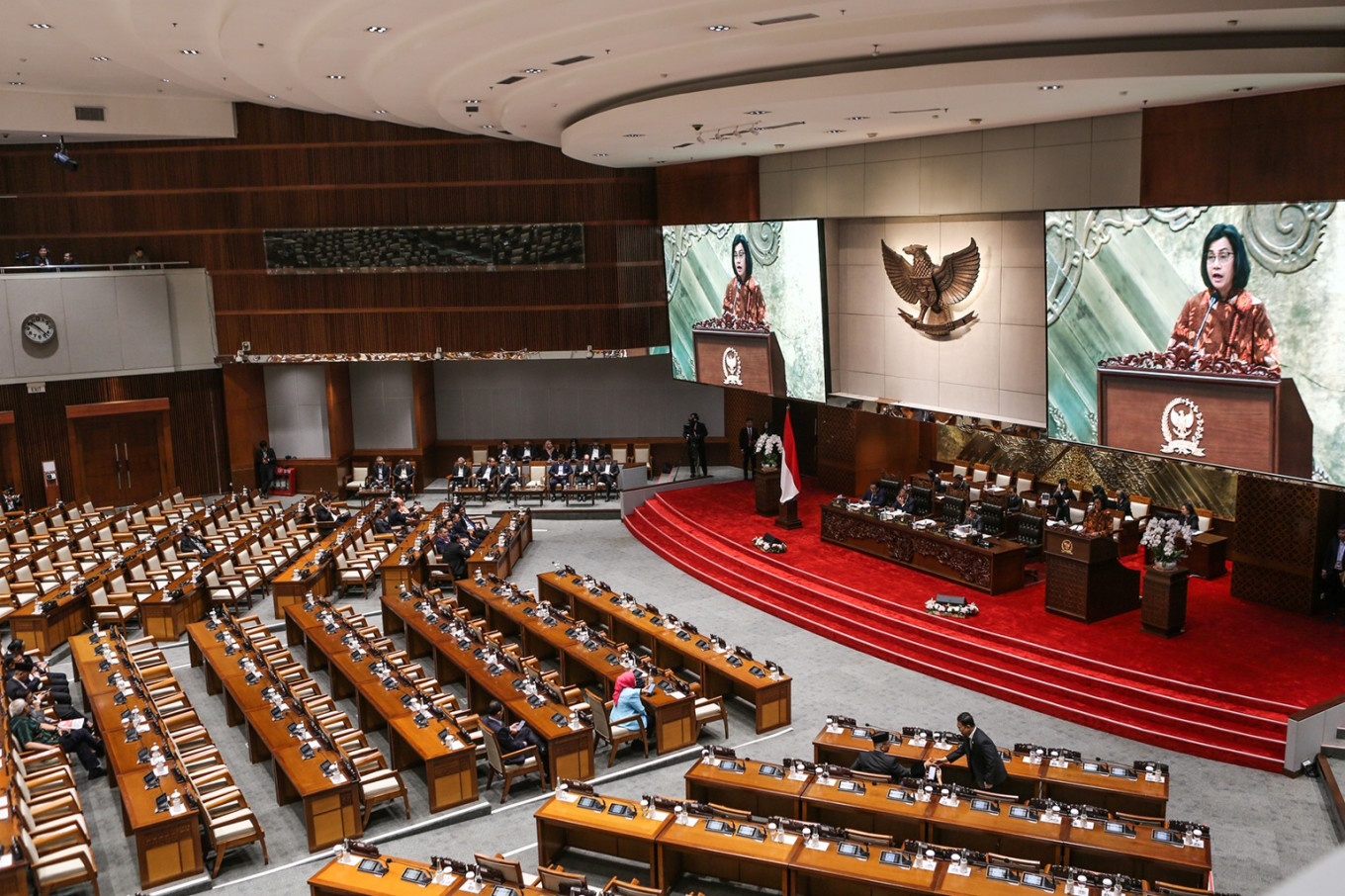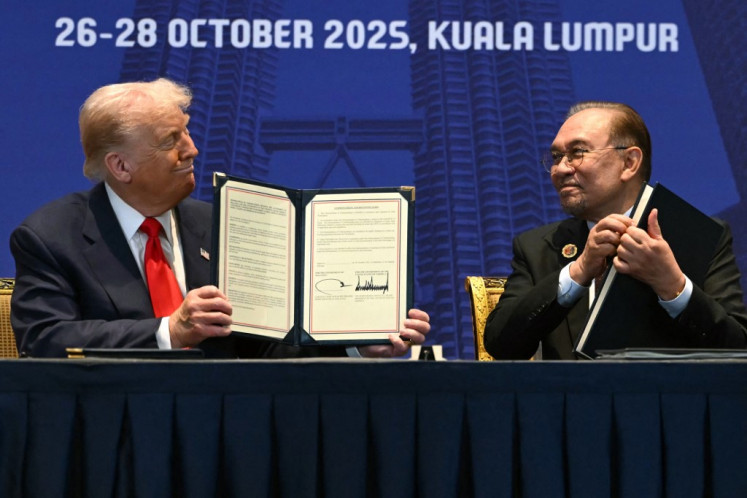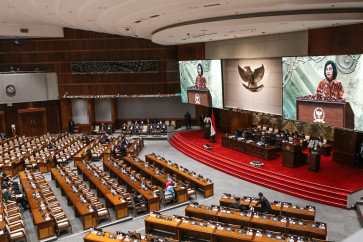Popular Reads
Top Results
Can't find what you're looking for?
View all search resultsPopular Reads
Top Results
Can't find what you're looking for?
View all search resultsThe silent threat to Indonesia’s budget sustainability
The seemingly positive fiscal trajectory hides a deeper vulnerability: the growing burden of debt servicing, which is steadily consuming a significant portion of the government’s revenue and narrowing its fiscal space.
Change text size
Gift Premium Articles
to Anyone
F
inance Minister Sri Mulyani Indrawati recently reported to the House of Representatives that the government had successfully maintained the nation’s fiscal health in the 2024 fiscal year despite global headwinds. A key highlight was the fiscal deficit, which stood at 2.29 percent of gross domestic product – just below the legal limit of 3 percent as stipulated by Law No. 17/2003 on State Finance.
Indeed, the deficit has gradually declined from Rp 657.2 trillion (US$41.07 billion) in 2021 to Rp 215.7 trillion in 2024. However, this seemingly positive fiscal trajectory hides a deeper vulnerability: the growing burden of debt servicing, which is steadily consuming a significant portion of the government’s revenue and narrowing its fiscal space.
As of Dec.31, 2024, Indonesia’s total government liabilities reached Rp 10.27 quadrillion, rising from Rp 9.53 quadrillion in 2023 and Rp 8.92 quadrillion in 2022. This increase was largely driven by long- term government bonds (SBN), rising foreign loans and growing interest payment obligations.
For example, long-term SBN debt rose from Rp 6.55 quadrillion to Rp 6.88 quadrillion, while foreign loans increased from Rp 886.3 trillion to Rp 943.3 trillion. Moreover, the portion of short-term debt doubled and the interest burden rose from Rp 112.7 trillion to Rp118.2 trillion.
While the debt-to-GDP ratio remains at 39.36 percent – well below the 60 percent ceiling prescribed by law – it does not capture the full extent of fiscal risk.
A more revealing metric is the debt service to revenue ratio, which measures the portion of government revenue required to repay both principal and interest. In 2024, this ratio was 42.30 percent – alarmingly close to the pandemic-era peak of 46.77 percent in 2020, and significantly above the International Monetary Fund’s recommended threshold of 25 to 35 percent.
In fact, the Supreme Audit Agency (BPK) has cited the debt indicators established by the International Organization of Supreme Audit Institutions (INTOSAI) in ISSAI 5411. In 2021, the BPK warned of heightened fiscal vulnerability based on the 2020 financial statements. In that year, debt service consumed 46.77 percent of revenue, while interest payments alone accounted for 19.06 percent – well above the IMF’s recommended maximum of 10 percent and International Debt Relief’s benchmark of 4.6 to 6.8 percent.



















